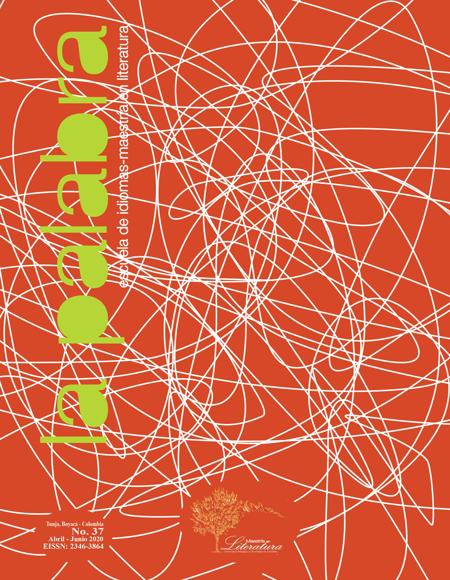The Phenomenon of Beauty as A Social Construction in El prestigio de la belleza by Piedad Bonnett

Abstract
This article presents an analysis of the discursive representation of beauty, from the Bajtinian terminology, which includes the ideologeme, the authoritarian word, the intrinsically convincing word, polyphony and dialogism, around the literary theory. In addition, this text exposes some findings relating to the power relations, ideologies and axiological burdens that are woven around the phenomenon of beauty as an aesthetic conception and social construction in two characters of the auto-biographic Colombian novel, The Prestige of Beauty, of piety Bonnett, published in 2010, and in which a representation of beauty is perceived with in two ways: the first one is based on the body and the second one is perceived on the intellect.
Keywords
Dialogism, Ideologeme, Authoritative Word, Compelling Intrinsically Word, Polyphony
References
Alberca, M. (1999). En las fronteras de la autobiografía. En M. Ledesma Pedraza (ed.), Escritura autobiográfica y géneros literarios (pp. ). Jaén, España: Univer-sidad de Jaén.
Bajtín, M. (1989). Teoría y estética de la novela. Trad. Helena Kriúkova y Vicete Cazcarra. Madrid: Taurus.
Bonnett, P. (2013). El prestigio de la belleza. Bogotá: Alfaguara.
Burke, E. (1987). Indagación filosófica sobre el origen de nuestras ideas acerca de lo sublime y de lo bello. Madrid: Editorial Tecnos.
Courtés, J. (1997). Análisis semiótico del discurso. Del enunciado a la enunciación. Madrid: Gredos.
Eco, U. (2008). Historia de la belleza (9ª ed.). Barcelona: Lumen.
Fontanille, J. (2013). Medios, regímenes de creencia y formas de vida. Contratexto, (21), 65-82. Recuperado de http://www1.ulima.edu.pe/Revistas/contratexto/v21/04%20-%2021.pdf
GOLDMANN, L. y BARTHES, Roland (compiladores). (1969). Literatura y sociedad. Problemas de la metodología en sociología de la literatura. Barcelona: Martínez Ro-ca.
Greimas, A. J. (1989). Del sentido II. Ensayos semióticos. Madrid: Gredos.
Hamon, P. (1984). Texte et idéologie. Valeurs, hiérarchies et évaluations dans l´œuvre littéraire Paris: Presses Universitaires de France.
LONDOÑO, V. Patricia, JURSICH, D. Mario. (1995) Diarios, memorias y autobiogra-fías en Colombia. En: Boletín Cultural y Bibliográfico, Vol. 32, no. 40, pp. 142-162.
Mandoki, K. (2006a). Estética cotidiana y juegos de la cultura. Prosaica I. México: Siglo XXI Editores.
Mandoki, K. (2006b). Prácticas estéticas e identidades sociales. Prosaica II. México: Siglo XXI Editores.
Paveau, M. A. (2006). Les prédiscours. Sens, mémoire, cognition. París: Presses Sorbonne Nouvelle.
PEIRCE, Charles. (1978) Écrits sur le signe. Paris: Le Seuil. Precedida por la nume-ración de la edición de Cambridge (PEIRCE Charles. Collected papers. Cambridge (Mass.): Charles Hartshorne & Paul Weiss, Harvard University Press, 1931-1935 & 1957-1958. vol. 2).
Restrepo, M. (1993). Ser-signo-interpretante. Bogotá: Significantes de Papel Edicio-nes,
Romera, J. (1981). La literatura, signo autobiográfico (el escritor signo referencial de su escritura). En J. Romera (ed.), La literatura como signo (pp. 13-46). Madrid: Playor.
Van Dijk, T. (1999). Ideología. Una aproximación multidisciplinaria. Trad. Lucrecia Berrone de Blanco. Buenos Aires: Gedisa.